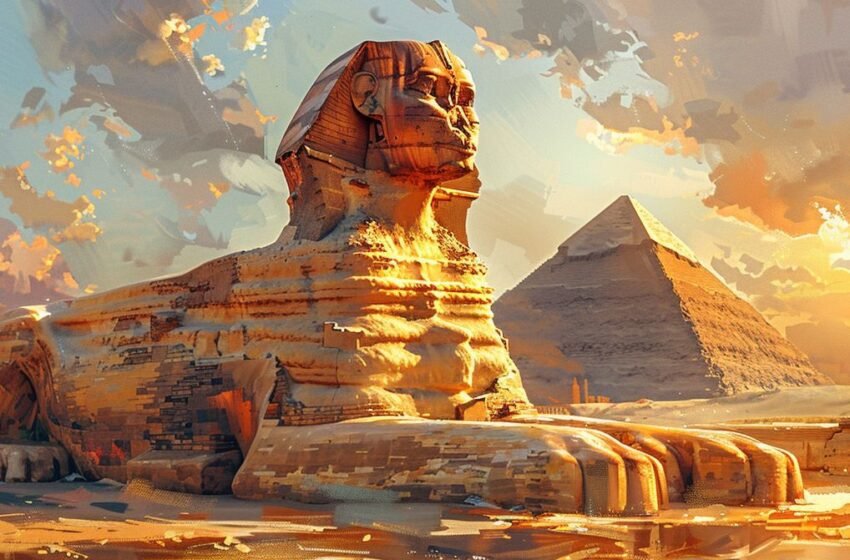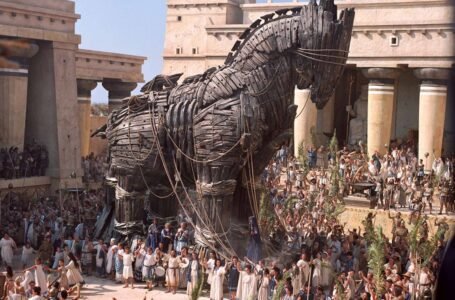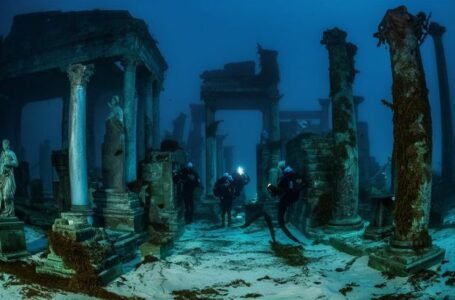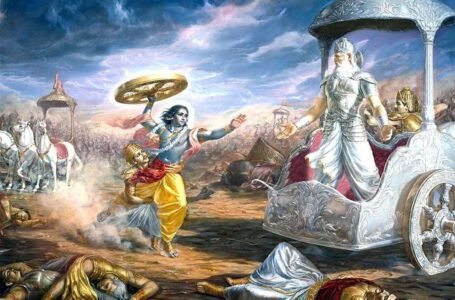God on the Throne: Divine Kingship and the Politics of Sacred Illusion in Ancient Egypt

~Vani Mishra
Of all the ancient riverine civilizations namely the Tigris, the Euphrates, the Indus, the Yangtze none blended the sacred and the political as tightly as Egypt on the Nile. Here, faith did not exist apart from law, and government was never far from ritual. Every temple inscription, towering statue, and dawn chant swept up in desert air bore the same message: the Pharaoh was not a man. He was the breath of God in flesh, a god striding in linen garments, the still centre around which heaven rotated and the Nile flowed. The genius of Egypt’s divine kingship was not so much in its scale but in its deep grasp of the human spirit’s desire for order, purpose, and continuity. Divine rule was not supposedly credulity; it was a highly nurtured worldview built with amazing consistency over centuries. Through stone and chant, through myth and harvest, the Pharaoh was not foisted upon the people he was dreamed by them, required by them, and made part of the very beat of the earth they plowed.
The Birth of the Living God
To learn about the Egyptian king is not to start with law, conquest, or tax. It is to start with the stars. To the ancient Egyptian fancy, the universe was not a silent void but a sacred harmony named Ma’at. All things including rivers, seasons, animals, speech, silence had their places within the balance. Upsetting this balance was not an abstraction. It was experienced in crop failure, disease, social turbulence. Ma’at needed to be maintained. To do that, there had to be a protector. That protector was the Pharaoh. Since the beginning of the First Dynasty, the Pharaoh had never been described as simply appointed by the gods. He was a god. When Alive, he was Horus, the falcon-eyed sky god who gazed down at Egypt with unblinking guardianship. Dead, he became Osiris, king of the underworld and symbol of rebirth. This was no poetic exaggeration. It was reality etched upon tomb walls, lived out in yearly rituals, spoken in fishermen’s and scribes’ prayers.
The Pyramid Texts, some of the oldest religious texts in the world, describe kings climbing into the heavens, becoming one with celestial flames, and taking their place among the stars. They were not epitomes of escapism. They were blueprints for eternal reign. A king who had his soul dance among the stars was a king who could never be deposed. But divinity was never a solace alone. It was a means of governance. A god cannot be questioned. A divine voice cannot be resisted. Treason, in this system, was not merely against the law it was a breach of the cosmic order itself. The brilliance of this design was that it rendered royal power to seem not arbitrary, but organic. As organic as dawn.
Temples as Engines of Sovereignty
Egypt’s temples were more than shrines. They were the empire’s heartbeats, stone-given affirmations of the Pharaoh’s sacred presence. Walk among the huge columns of Karnak or the elegant reliefs of Luxor, and one does not so much enter a church. One enters a machine for political belief. Rituals performed within these temples were formal, calculated, frequently concealed from the public eye. Priests bathed statues, burned incense, and recited hymns not to appease gods but to maintain the balance of the universe. Each movement reiterated the Pharaoh’s cosmic mission. Even when absent in person, his image loomed imposingly, carved in timeless perfection, accepting offerings intended to feed the gods themselves. These temples were more than mere houses of worship. They were sites of administration, economic centres, and ideological powerhouses. Each wall shouted that the Pharaoh sustained heaven and earth. Each pillar murmured his immortality.
Pharaoh statues were not portraits. They were symbols. Seated or striding, they expressed confidence and authority. Dominating them, lesser beings foes of Egypt or alien statesmen were inscribed as dwarfed, stooped, and powerless. These were not falsehoods. These were a visual grammar of authority. Where there were no cameras or newspapers, stone delivered the message: the Pharaoh is supreme because the universe ordains it.
Myth: The State’s Eternal Narrative
The Egyptian state did not possess a constitution in the way we would know it now. It possessed something more permanent: myth. The myth of Osiris, the righteous king assassinated by his brother Seth, only to be avenged by his son Horus, was something greater than a religious story. It was the template for royal legitimacy. Each Pharaoh, crowned at Memphis or Thebes, was not merely a ruler, but a Horus reborn, bringing order out of chaos.
In coronations, the Pharaoh did not simply take the throne. He entered myth. In festivals such as the Sed Jubilee, marked after thirty years of reign, the king symbolically died and was reborn renewed in power, youth, and divinity. The state did not wait for decline. It anticipated it, reversing biology into ritual. To oppose the king was to oppose Horus. To stand against him was to take Seth’s side. Egyptian politics was never simply a matter of control. It was an issue of alignment in the cosmos. The king was the pyramid’s tip, but his base rested upon myth familiar not only to priests and writers but to field labourers who genuflected as royal corteges went by.
Temples, Priests, and the Economy of Faith
Behind Egypt’s stupendous religious building lay a system of economic and administrative exactness. Temples were not simply ritual spaces. They were banks, warehouses, landlords, and employers. The Pharaoh, as God-king, was in law the proprietor of all land. Temples managed huge estates, and priests served as both spiritual mentors and tax collectors. In the New Kingdom, above all, priesthoods like that of Amun at Thebes amassed great riches so much so that they at times outranked Pharaohs themselves in power.
They were paid in grain, animals, and labour, all of which passed through the temples. They were not merely civic obligations. They were religious obligations. To fill the temple granaries was to feed the gods. Redistribution of that grain during famine or ritual sacrifice legitimized the divine logic of the state: the Pharaoh gives, because the gods give through him.
History, also, was a field of power. Pharaohs often effaced or modified the histories of previous rulers who were politically awkward. Names were removed, statues re-dedicated, and ancestry rewritten. In Egypt, memory was not passed down. It was written by fiat, and in stone.
Crisis: When the Mask of God Cracked
Despite its lasting illusion of eternity, Egyptian divine kingship was not crisis-proof. There were moments when the godhead mask slipped, and only a broken throne remained.
Dynasties fell during the Intermediate Periods, and regional chiefs usurped power without worldwide recognition. Civil wars broke out. Foreigners like Hyksos, Nubians, Libyans conquered Egypt and borrowed its royal traditions to legitimize themselves. Even divine kingship, it appeared, could be borrowed.
The most dramatic disruption may have been that brought by Akhenaten, the Pharaoh who abandoned the ancient pantheon and elevated a solitary deity—the Aten, the sun disk. In so doing, he shattered centuries of ritual, alienated great priesthoods, and constructed a new city devoted solely to his vision. He is called a visionary by some. Some call him a tyrant. What is certain, however, is that he knew the machinery of religion—and attempted to remake it. His successors obliterated his legacy after his death. Temples were reopened. Ancient gods were restored. Statues of Akhenaten were smashed. Even in rebellion, Egypt held on to its sacred hierarchy.
The Pharaoh as Myth Made Flesh
What are we to conclude about this system, thousands of years down the line? Was it just superstition? A clever manipulation of the masses? Or was it something more profound?
To write it off as illusion is to disregard its brilliance. The Egyptians were not idiots. They were philosophers, architects, artists, farmers who constructed a system which responded not just to the question of who should govern, but why the world is the way it is. Their king was no mere man. He was a response to the question of chaos. He was the last argument against uncertainty.
Divine kingship unified Egypt. It brought provinces together, muted competition, uplifted work, and immortalized governance. To this day, in our politics, there are still reminders. When it is said that leaders are saviours, when power is linked to fate, we are still haunted by the shadow of the Pharaoh.
Conclusion: Stones That Still Speak
To stroll the silent colonnades of Karnak or to look into the tranquil eyes of a Pharaoh’s statue is to sense a presence that defies time. These were not merely monuments. They were messages. They inform us that long ago, a civilization envisioned a world wherein power had the face of a god and governed not merely through armies, but through stories, stars, and stone. Egypt’s kingship by the gods was not just a religion. It was a drama in which an entire culture took its turn a single chisel strike, a single hymn, a single grain of barley at a time. The Pharaoh can no longer sit on his throne. But his voice, soft and calm, still echoes speaking not with words, but with the eternality of stone.


